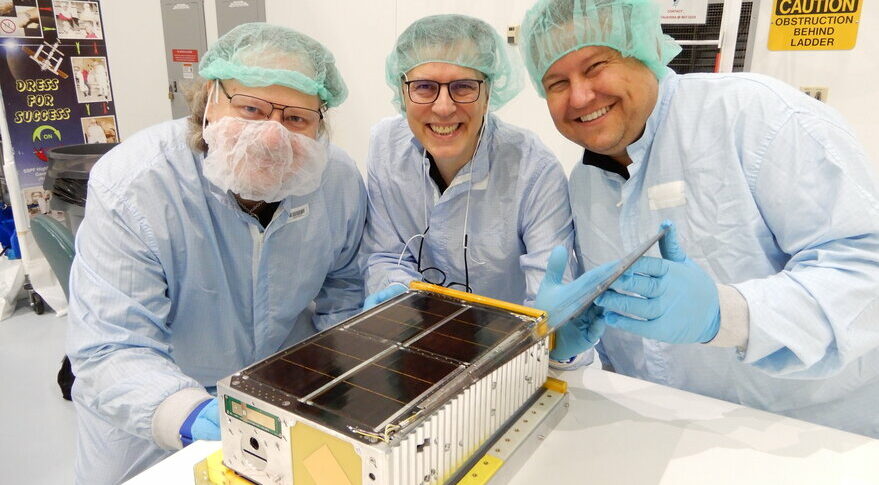SAN FRANCISCO – Team Miles founder Wesley Faler has spent more than a decade developing and refining the plasma thrusters set to fly for the first time on a cubesat launching alongside the NASA Artemis 1 mission.
The Team Miles cubesat, one of ten secondary payloads mounted on a Space Launch System fairing, won its ride to orbit in 2017 through the NASA CubeQuest Challenge, a competition aimed at encouraging citizens to invent affordable technologies for miniature spacecraft.
For the CubeQuest Challenge, Faler, whose expertise ranges from particle physics to software and manufacturing systems, leads an all-volunteer team of scientists and engineers who designed and built the Team Mile cubesat. Team Miles won prizes in every CubeQuest ground tournaments by proving, for example, the merit of its engineering designs, plans, analysis and models.
Faler co-invented the team’s patent-pending water-fueled plasma thruster. Twelve of the thrusters, mounted on the Team Miles cubesat, are controlled by a custom-built radiation-tolerant computer. The computer continuously evaluates the performance of each thruster.
“It’s running a small experiment on itself to figure out which thrust heads are behaving best,” Faler said.
A subsystem to enable the six-unit cubesat to communicate with Earth from deep space also was invented by Faler.
Communicating from at least 3 million kilometers from Earth is one of the technical objective of the CubeQuest Challenge. Competitors who prove that feat will share a $1.5 million prize.
“There was no technology that was capable of providing small satellite communications at that kind of distance, because it’s going to the moon and beyond,” said Brad Berkson, Miles Space chief operating officer. “He had to invent ways to communicate.”
Miles Space, a Florida startup founded by Team Miles members, is the commercial outlet for the technology. Executives are not yet ready to name their customers, but Faler said, “we have other in-space demo opportunities lining up right now.”
Faler has been working on his unique propulsion system since the early 2000s. Some elements of it have been patented. Others patents are pending.
“It’s completely novel and what’s been interesting is the massive denial on the part of the experts, who say it is physically impossible and it can’t work,” Berkson said.
The problem is that the propulsion equation most engineers remember is an abbreviated one.
“It leaves out a pressure term,” Faler said. “They use the shorthand version to relate thrust to power and fuel economy. When you plug in the full equation, we’re about 5 percent efficient.”
Team Miles has conducted extensive testing of its cubesat on the ground.
“We know it can fly if the batteries are dead,” Faler said. “We know it will keep flying if the software hiccups and the computer reboots. We know that if the radio signal is weak, we can still recover the signal here on the ground.”
Still, the prospect of the cubesat finally reaching orbit is both exciting and terrifying, Faler said.
“I’m looking forward to a nap after flies,” Faler said. “After years of waiting, my anxiety is really high. I won’t be able to relax until I know it’s coasting free after swinging by the moon.”

